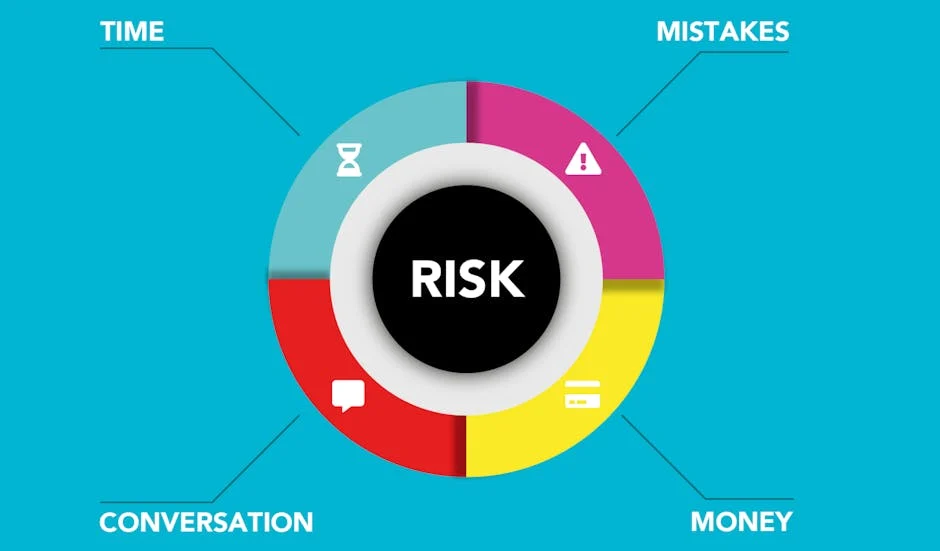Industrial facilities are vital to the economy, fueling industries with materials, goods, and services. Yet, these facilities operate in environments filled with potential risks. Equipment failure, safety hazards, and environmental threats are all challenges that can quickly escalate if not addressed proactively. This article explores why risk management plans are crucial for industrial facilities, offering insights into identifying risks, creating an effective plan, and ensuring its successful implementation.
Identifying Potential Risks in Industrial Facilities
Industrial environments inherently come with a unique set of risks. Understanding and identifying these hazards is the first step in mitigating potential threats.
Equipment Failure
Machinery and equipment are at the heart of any industrial operation. However, wear and tear, lack of maintenance, or operational errors can lead to sudden breakdowns. For instance, a malfunctioning conveyor belt or faulty sensors can bring production to a halt, resulting in costly downtime and revenue loss.
Proactive maintenance programs and regular inspections are critical to preventing equipment-related risks.
Safety Hazards
Industrial facilities often expose workers to hazardous conditions. Falls, exposure to toxic substances, and accidents caused by heavy machinery are common safety concerns. According to OSHA, thousands of workplace injuries stemmed from insufficient hazard controls.
To protect employees, it’s vital to have safety protocols in place, such as adequate training, proper safety equipment, and clearly defined emergency procedures. Recognizing safety hazards early is critical to ensuring workforce well-being and regulatory compliance.
Environmental Issues
Industrial facilities have an environmental impact, often dealing with hazardous materials and potential spills. For example, improper containment of chemicals can harm nearby ecosystems and lead to significant fines.
A risk management plan should prioritize proper waste disposal, spill response procedures, and compliance with environmental regulations to reduce ecological risks.
Creating an Effective Risk Management Plan
Once risks are identified, creating a robust risk management plan is the next critical step. An effective plan serves as a roadmap for mitigating potential dangers and maintaining operational continuity.
Step 1: Conduct a Comprehensive Risk Assessment
Conduct a detailed risk assessment to identify specific vulnerabilities within the facility. This involves evaluating past incidents, analyzing equipment performance data, and consulting with team members.
Step 2: Prioritize Risks
Not all risks carry the same weight. Use tools like risk matrices to prioritize hazards based on their potential impact and likelihood. High-priority risks should be addressed immediately, while lower-priority risks can be planned for over time.
Step 3: Develop Mitigation Strategies
Address each risk with a tailored mitigation strategy. For example, if machinery breakdown is identified as a top concern, develop a robust preventive maintenance schedule. Similarly, implement robust safety training programs to reduce accidents in high-risk areas.
Step 4: Draft the Risk Management Plan
Document all findings, strategies, and action steps. Include key components such as:
- Risk identification and analysis
- Mitigation and contingency plans
- Roles and responsibilities for employees
- Emergency protocols
Implementing the Risk Management Plan
Creating a plan is only half the battle. Implementing it so that it integrates smoothly into daily operations is where the real work begins.
Communicate the Plan Effectively
Make sure all employees are aware of the risk management plan and their part in it. Host regular informational sessions, provide easily accessible resources, and ensure all staff members are trained thoroughly on procedures.
Assign Clear Responsibilities
Assign specific roles to team members so that everyone knows their responsibility. For instance, designate a safety officer to oversee adherence to safety regulations. For environmental risks, ensure you have dedicated personnel for emergency spill response and environmental compliance.
Conduct Regular Drills
Emergency drills are vital for putting your plan into action. Whether it’s a fire drill or a simulated chemical spill, rehearsing responses keeps employees prepared and confident in the face of real emergencies.
Monitoring and Reviewing the Plan
Risk is not static, and as facilities evolve, so do the challenges they face. Regular monitoring and reviews are essential to refining and updating the risk management plan.
Continuous Monitoring of Key Metrics
Track performance metrics tied to your risk management efforts. For instance:
- Frequency of equipment breakdowns
- Number of workplace incidents or injuries
- Environmental impact reports
Analyzing these metrics helps identify areas needing improvement.
Schedule Regular Audits
Conduct periodic audits to evaluate the effectiveness of the risk management plan. External audits, complemented by internal reviews, ensure a thorough assessment.
Stay Updated on Regulations and Innovations
Laws and industry standards evolve. Staying informed about regulatory changes and technological advances can help enhance your risk management practices. For example, advancements in AI technology now allow for predictive analytics in machinery, making it easier to forecast and address equipment failures before they occur.
Conclusion
A strong risk management plan helps industrial facilities operate confidently, knowing they’re prepared for potential threats. By identifying risks, creating tailored strategies, and fostering a culture of monitoring and adaptation, organizations can protect employees and resources. If your facility doesn’t have a plan yet, now is the time to start. Begin with a risk assessment or assemble a team to draft a framework. The benefits are clear, and the cost of inaction is too high to ignore. Risk management isn’t just about avoiding harm—it’s about enabling your facility to thrive, even during challenges.

